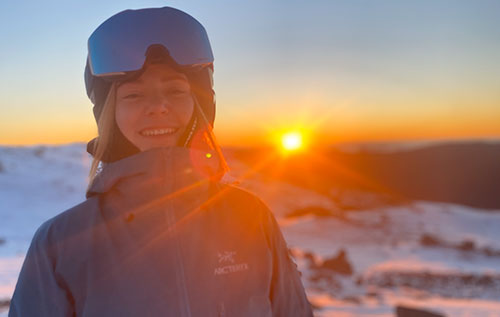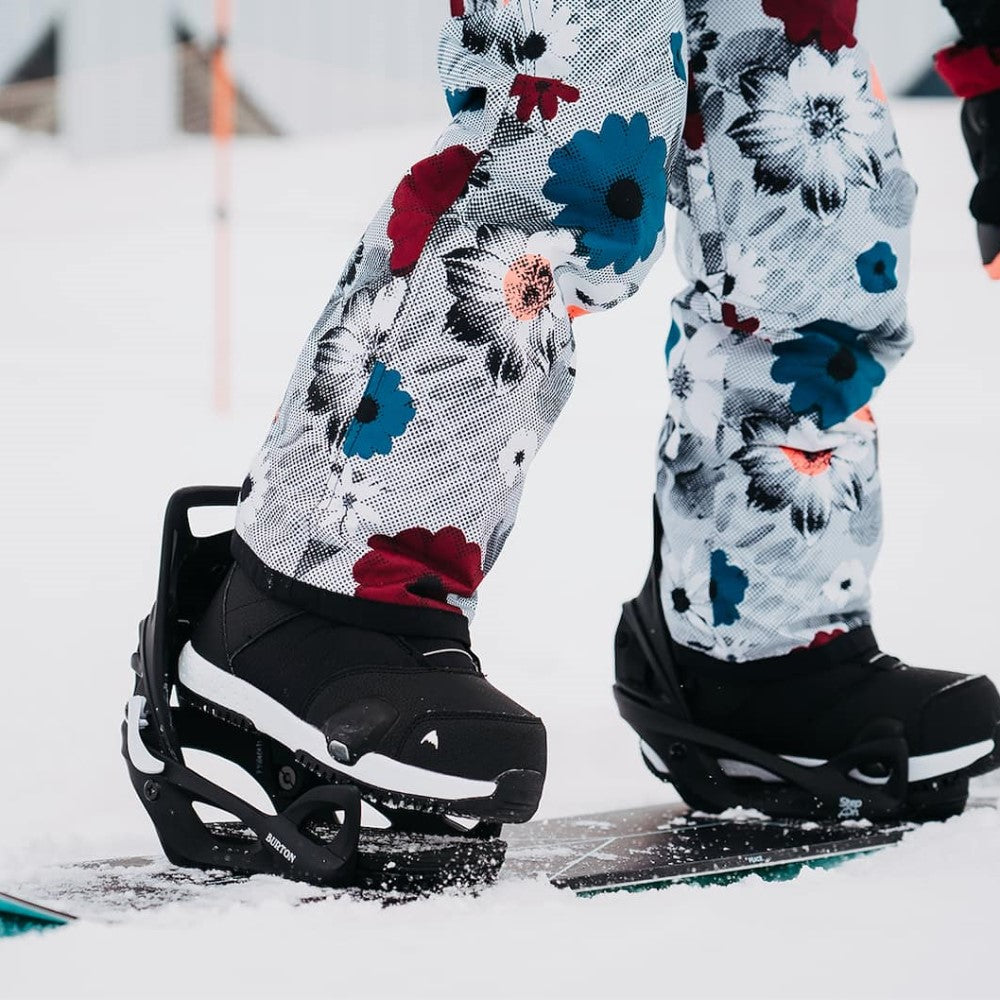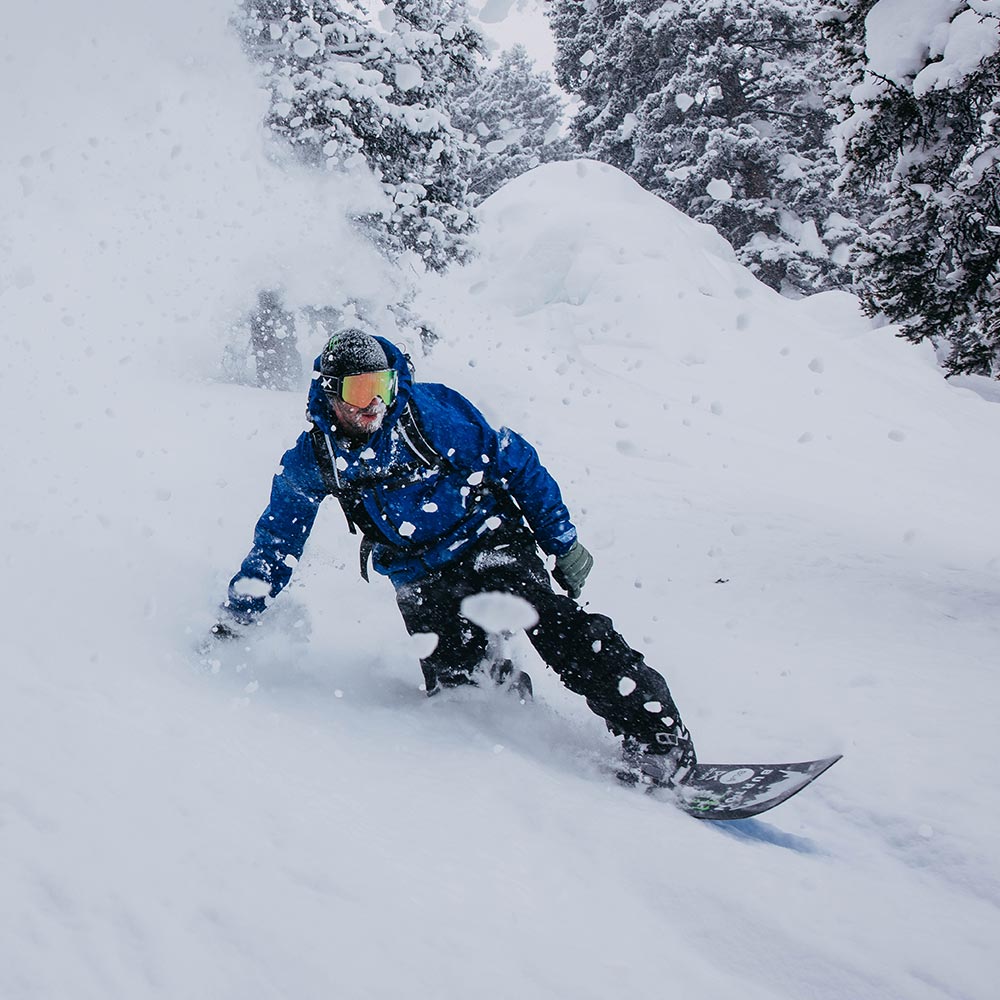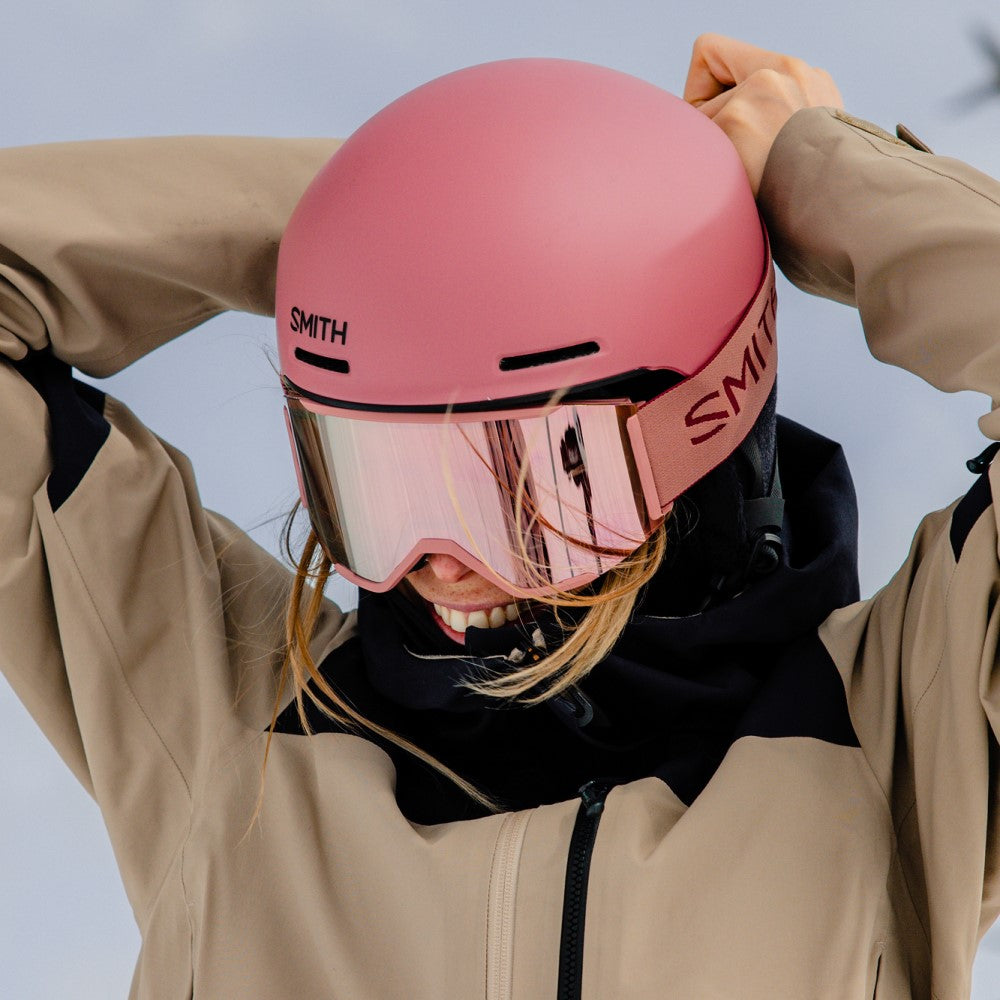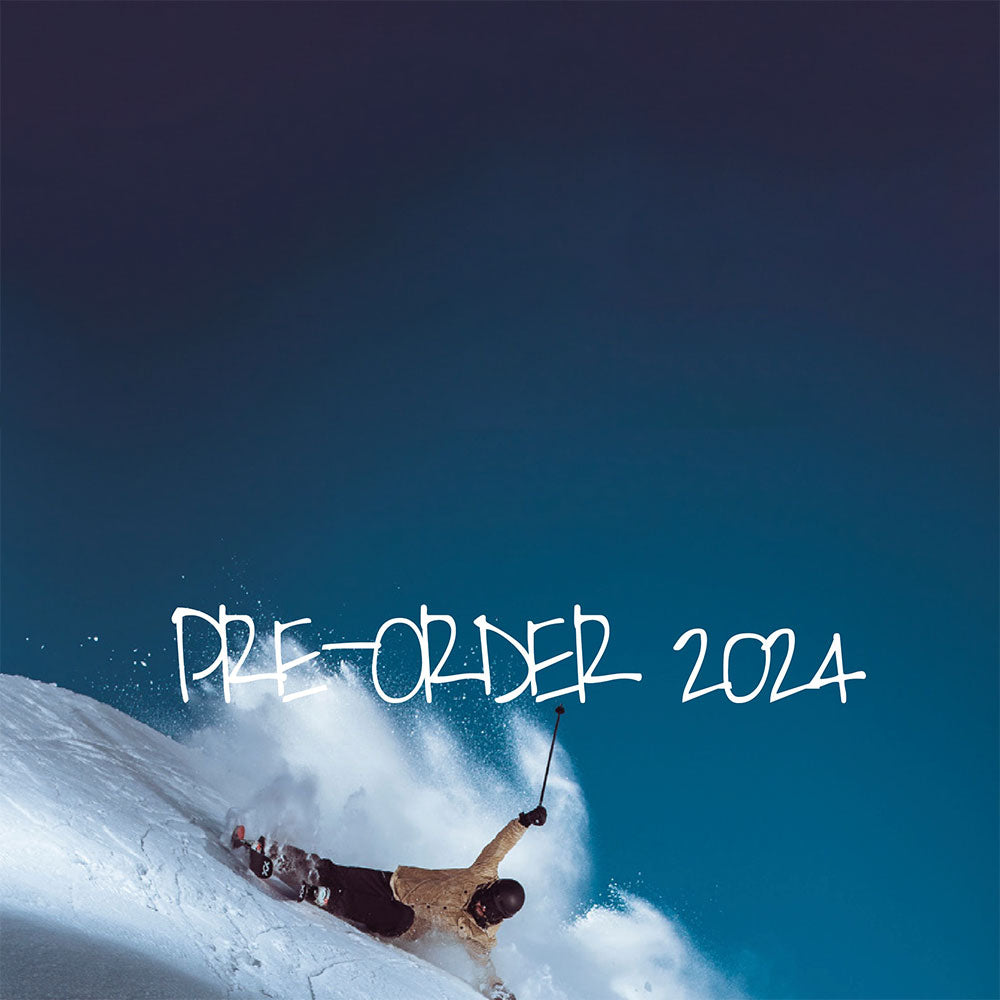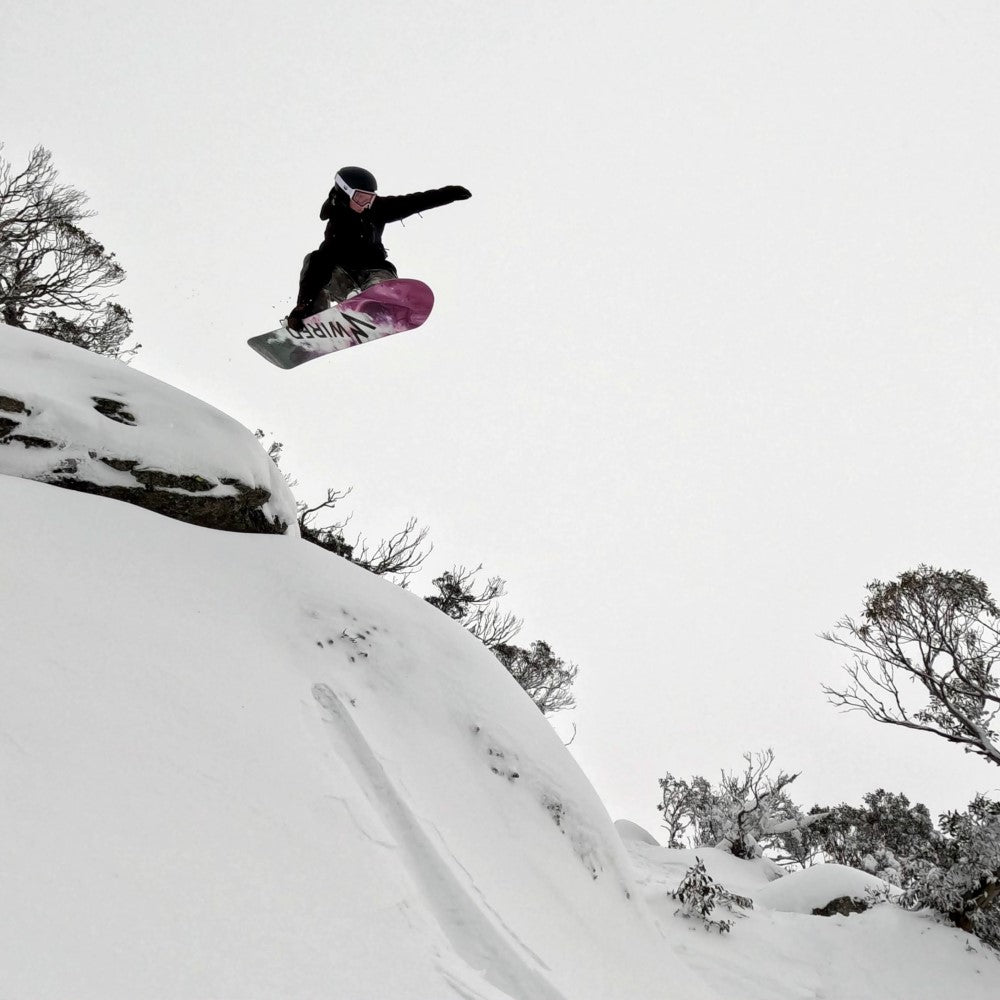 But what does it take to head into the wilderness? Or more importantly, what does it take to do so safely? Things can and do go wrong out there, at times with serious consequences. Preparedness, knowledge and experience are key to repeat successful back country trips, so during the lead up to winter Rhythm Snowsports will bring you a series of back country ‘portraits’ - interviews with back country riders whose valuable knowledge has been gained via many back country years and experiences, both good and bad.
Ladies first they say, so we’ll get the ball rolling with a woman who has an insatiable appetite for snow adventure and more. Currently in Alaska (again), we caught up with Jennie Milton or ‘Adrenajen’ and fired off a few questions.
Thanks for your time Jen, where are you from and what’s your skiing background?
But what does it take to head into the wilderness? Or more importantly, what does it take to do so safely? Things can and do go wrong out there, at times with serious consequences. Preparedness, knowledge and experience are key to repeat successful back country trips, so during the lead up to winter Rhythm Snowsports will bring you a series of back country ‘portraits’ - interviews with back country riders whose valuable knowledge has been gained via many back country years and experiences, both good and bad.
Ladies first they say, so we’ll get the ball rolling with a woman who has an insatiable appetite for snow adventure and more. Currently in Alaska (again), we caught up with Jennie Milton or ‘Adrenajen’ and fired off a few questions.
Thanks for your time Jen, where are you from and what’s your skiing background?
 I’m originally a Canberra girl - Born in 1971 to John & Rosie Milton who started one of Canberra’s first Ski Shops - Slalom Ski & Sea. My brother Michael & I grew up in a sporty family and spent winter holidays skiing and summer holidays sailing. Michael got into ski racing & I followed the freestyle path. I did well in ski ballet, bumps & aerials when I was young and I still compete today as one of the worlds top female snowkiters.
My first job was working in ski rental scrubbing mud off boots, but I soon progressed to the sales floor. In school holidays I would go down to Thredbo and work as a ski instructor, ski photographer and numerous other ski bum jobs.
At the age of 20 I was put in charge of retail store called Canberra Blade Centre, which I built into Adrenalin Sports to house all the latest products like snowboards, skate boards, rollerblades, shoes and fashion. With a great crew of staff we turned this business into a huge success. So for my 30th birthday I went heli-skiing in Alaska. A dream come true!!! Snowboarding huge untracked peaks just like the TB movies we watched in the shop. I was exposed to avalanche terrain and the dangers involved for the first time, when I watched one of the guys in my group ride / fall into a crevasse. Helping the guides as an anchor weight I watched these mountain heroes deal with a major rescue and pull the guy out. This trip changed me forever! Life is too short! Within two years I sold Adrenalin Sports, sold my house & car. Flew to USA, bought an RV and drove to Alaska to spend a year exploring and of course do some more Heli-boarding. It was also one of my goals to learn as much as I could about snow science and travel in avalanche terrain.
So I take it Alaska was your first experience in the back country?
I’m originally a Canberra girl - Born in 1971 to John & Rosie Milton who started one of Canberra’s first Ski Shops - Slalom Ski & Sea. My brother Michael & I grew up in a sporty family and spent winter holidays skiing and summer holidays sailing. Michael got into ski racing & I followed the freestyle path. I did well in ski ballet, bumps & aerials when I was young and I still compete today as one of the worlds top female snowkiters.
My first job was working in ski rental scrubbing mud off boots, but I soon progressed to the sales floor. In school holidays I would go down to Thredbo and work as a ski instructor, ski photographer and numerous other ski bum jobs.
At the age of 20 I was put in charge of retail store called Canberra Blade Centre, which I built into Adrenalin Sports to house all the latest products like snowboards, skate boards, rollerblades, shoes and fashion. With a great crew of staff we turned this business into a huge success. So for my 30th birthday I went heli-skiing in Alaska. A dream come true!!! Snowboarding huge untracked peaks just like the TB movies we watched in the shop. I was exposed to avalanche terrain and the dangers involved for the first time, when I watched one of the guys in my group ride / fall into a crevasse. Helping the guides as an anchor weight I watched these mountain heroes deal with a major rescue and pull the guy out. This trip changed me forever! Life is too short! Within two years I sold Adrenalin Sports, sold my house & car. Flew to USA, bought an RV and drove to Alaska to spend a year exploring and of course do some more Heli-boarding. It was also one of my goals to learn as much as I could about snow science and travel in avalanche terrain.
So I take it Alaska was your first experience in the back country?
 Yep, 2003 was the first year, I spent the season in Thompson Pass, Alaska. Living in my RV in the mountains at the Heli-skiing base camp.
I couldn’t afford the helicopter every day so I learnt to fly a kite that pulled me around on my skis. And my boyfriend, now husband - Heli Guide Steve Schumm taught me to use skins on the bottom of my skis and Alpine Trekkers in my bindings to go up the mountain. This sounded like a great idea but after spending 3 hours in my alpine boots slogging and sweating to only get half way up the mountain I decided the helicopters were really great value.
Where are your favourite Alpine Touring areas?
Yep, 2003 was the first year, I spent the season in Thompson Pass, Alaska. Living in my RV in the mountains at the Heli-skiing base camp.
I couldn’t afford the helicopter every day so I learnt to fly a kite that pulled me around on my skis. And my boyfriend, now husband - Heli Guide Steve Schumm taught me to use skins on the bottom of my skis and Alpine Trekkers in my bindings to go up the mountain. This sounded like a great idea but after spending 3 hours in my alpine boots slogging and sweating to only get half way up the mountain I decided the helicopters were really great value.
Where are your favourite Alpine Touring areas?
 Thompson pass in Alaska is my favourite AT backcountry play ground. Amazing access right from the road to so many different mountains and skiable aspects depending on conditions.
Bridger Bowl in Montana is where Steve is from and it has some of the best side and backcountry for the hardcore anywhere on the planet!!!
Day after day I’d venture to different summits and continue to learn from professional guides and locals with years of experience. Listening to guide meetings I’d hear forecasts, snow reports and incident de-briefs.
Thredbo in Australia - back and side country has been my home playground. My favourite thing to do when I was learning to skin was to set off at first light from Friday Flat and skin to the top of the resort, getting first tracks before the patrollers. My favourite places to do skin laps are Stanleys, Twin Valleys and Dead Horse to Ramshead. My adventures are usually for the day or a quick morning tour before work. In 2006 I clocked up the equivalent of 2 summits of Everest from sea level (that’s almost 18000m) and got to work in Jindabyne by 10am every day... My snowkite adventures usually start behind Thredbo and take me further out to many different zones. Over 100km’s in a day can be achieved with good winds.
What equipment do you use and how do you approach safety in the back country?
I learnt on my first day out that I need the right gear to go backcountry. Every year my gear is getting lighter and lighter so it’s less weight to carry up the mountains. The bigger the mountain or the more laps I want to do the lighter my gear needs to be.
Thompson pass in Alaska is my favourite AT backcountry play ground. Amazing access right from the road to so many different mountains and skiable aspects depending on conditions.
Bridger Bowl in Montana is where Steve is from and it has some of the best side and backcountry for the hardcore anywhere on the planet!!!
Day after day I’d venture to different summits and continue to learn from professional guides and locals with years of experience. Listening to guide meetings I’d hear forecasts, snow reports and incident de-briefs.
Thredbo in Australia - back and side country has been my home playground. My favourite thing to do when I was learning to skin was to set off at first light from Friday Flat and skin to the top of the resort, getting first tracks before the patrollers. My favourite places to do skin laps are Stanleys, Twin Valleys and Dead Horse to Ramshead. My adventures are usually for the day or a quick morning tour before work. In 2006 I clocked up the equivalent of 2 summits of Everest from sea level (that’s almost 18000m) and got to work in Jindabyne by 10am every day... My snowkite adventures usually start behind Thredbo and take me further out to many different zones. Over 100km’s in a day can be achieved with good winds.
What equipment do you use and how do you approach safety in the back country?
I learnt on my first day out that I need the right gear to go backcountry. Every year my gear is getting lighter and lighter so it’s less weight to carry up the mountains. The bigger the mountain or the more laps I want to do the lighter my gear needs to be.
 Most skis will work for touring as long as the skins fit well. I like to use a fat ski 109 - 122 under foot. My favorites for touring are the Volkl BMT 109 made of carbon, they are super light. In Australia I use a nylon based skin which suits the warmer conditions. I always carry rub-on wax with me and I wax my skis & skins regularly to keep a good slide forward. In Alaska and Montana I use a skin with higher percentage of Mohair which suits cold conditions.
Alpine Touring bindings are essential. They allow the heel to lift during ascent and lock down for the down hill decent. I’ve been using Dynafit bindings for over 10 years but have tested many others. Although the Dynafit are super minimal I trust them with my life. They take time to get used to just like clip in pedals on bikes. But once you do they are awesome. I like the pin system which keeps my toe movement close to the ski and the heel releases from the boot so I’m not lifting a binding with every step. It’s more like a telemark feel on the ascent.
Alpine boots won’t cut it for multiple hours of hiking/skinning. It’s important to have a walk mode to allow the ankle to have full motion. Blisters will be a problem if your boots don’t fit properly or you wear the wrong socks.
I use a Dynafit boot with an Intuition liner. The Intuition wrap liner is super light weight and fantastic in cold conditions. I’ve been using the same boot shell for 5 years but I replace the liners every year to give me a new boot feel. Touring creates hot sweaty feet so the liners tend to compress faster than in alpine skiing. Plus getting new liners is like having a new pair of socks. My favourite socks are Le Bent merino/bamboo mix.
My backcountry pack is 25L and I don’t ski without it! It contains shovel, probe, skins, extra layer (packable puffy) spare goggles, spare gloves, water, snack, basic first aid / blister kit, toilet paper and bags, map, compass, phone, camera, SPOT tracker, leatherman, snow anchor and sometimes my kite. Wrap some duct tape around a ski pole for use in emergencies to fix gera problems etc.
In Alaska I add a beacon, radio, harness, cordelette and prusik for crevasse rescue. It’s important to carry safety gear to rescue your friends as they are carrying it to rescue you.
Most skis will work for touring as long as the skins fit well. I like to use a fat ski 109 - 122 under foot. My favorites for touring are the Volkl BMT 109 made of carbon, they are super light. In Australia I use a nylon based skin which suits the warmer conditions. I always carry rub-on wax with me and I wax my skis & skins regularly to keep a good slide forward. In Alaska and Montana I use a skin with higher percentage of Mohair which suits cold conditions.
Alpine Touring bindings are essential. They allow the heel to lift during ascent and lock down for the down hill decent. I’ve been using Dynafit bindings for over 10 years but have tested many others. Although the Dynafit are super minimal I trust them with my life. They take time to get used to just like clip in pedals on bikes. But once you do they are awesome. I like the pin system which keeps my toe movement close to the ski and the heel releases from the boot so I’m not lifting a binding with every step. It’s more like a telemark feel on the ascent.
Alpine boots won’t cut it for multiple hours of hiking/skinning. It’s important to have a walk mode to allow the ankle to have full motion. Blisters will be a problem if your boots don’t fit properly or you wear the wrong socks.
I use a Dynafit boot with an Intuition liner. The Intuition wrap liner is super light weight and fantastic in cold conditions. I’ve been using the same boot shell for 5 years but I replace the liners every year to give me a new boot feel. Touring creates hot sweaty feet so the liners tend to compress faster than in alpine skiing. Plus getting new liners is like having a new pair of socks. My favourite socks are Le Bent merino/bamboo mix.
My backcountry pack is 25L and I don’t ski without it! It contains shovel, probe, skins, extra layer (packable puffy) spare goggles, spare gloves, water, snack, basic first aid / blister kit, toilet paper and bags, map, compass, phone, camera, SPOT tracker, leatherman, snow anchor and sometimes my kite. Wrap some duct tape around a ski pole for use in emergencies to fix gera problems etc.
In Alaska I add a beacon, radio, harness, cordelette and prusik for crevasse rescue. It’s important to carry safety gear to rescue your friends as they are carrying it to rescue you.
 Do’s and dont’s!
Do make a plan!
Do watch and check the weather forecast!
Do take a friend and tell someone where you are going and when you’re due back!
Do check to see if your partner has all safety gear and batteries are charged.
Do take photos and leave only your tracks!
Don’t ignore red flags (things that aren’t right) Is a storm coming? Are there indications of avalanches in the area? Was there a big difference in temperature during the past 24 hours or during the day?
Don’t head down a slope if you can’t make it back up to get home.
Don’t feel bad for turning back. Live to ski another day!
What’s your advice to first timers in the back country?
The 5 point education system for backcountry travel is:
Get the Gear!
Get the Training!
Get the forecast!
Get the picture in terms of what the snow is doing!
Get out of harms way!
Beginners should seek advice from experts in the shops, such as Rhythm, about gear and recommendations for a guide to take them into the backcountry.
Do a course to learn basic snow science and mountain rescue. Learn about the dangers in the areas where you’ll be going and how to avoid them.
Just because you’ve been skiing all your life and you’re an awesome skier doesn’t mean you have the skills to stay safe in the backcountry. Enjoy learning about another aspect of the sport and the more technical side to snow in it’s many forms.
The eskimo’s have over 100 different words for snow and I’d like to understand and ski all of them.
What’s your most memorable experience - good or bad?
During the season of 2006 I was caught in a class 5 (largest) avalanche caused by some guys who wanted to drop off a cornice.
The cornice broke. The size of 12 school buses parked end to end. It hit the slope and the whole mountain slid on two sides all the way to the valley floor 5000ft down. The crown was 7-8 feet deep. No one was buried and I came to a stop in a pile of blocks just above a cliff with a haematoma on my butt. Watching and listening on the radio I witnessed the guides in action again dealing with a dangerous situation. Learning from experience on the mountain has taught me a lot, like do more training, and don’t let your friends jump cornices while you’re on slope below.
Jen, we thank you for your time and of course we’re hugely jealous of your lifestyle. We look forward to sharing our back country with you.
Article written by Jake - a backcountry enthusiast who has a strong passion for Australia's landscape.
For tips on your Snow Sport equipment stay in touch with us:
facebook/rhythmsnowsports
instagram: @rhythmsnowsports
twitter: @rhythmsnowsport
Do’s and dont’s!
Do make a plan!
Do watch and check the weather forecast!
Do take a friend and tell someone where you are going and when you’re due back!
Do check to see if your partner has all safety gear and batteries are charged.
Do take photos and leave only your tracks!
Don’t ignore red flags (things that aren’t right) Is a storm coming? Are there indications of avalanches in the area? Was there a big difference in temperature during the past 24 hours or during the day?
Don’t head down a slope if you can’t make it back up to get home.
Don’t feel bad for turning back. Live to ski another day!
What’s your advice to first timers in the back country?
The 5 point education system for backcountry travel is:
Get the Gear!
Get the Training!
Get the forecast!
Get the picture in terms of what the snow is doing!
Get out of harms way!
Beginners should seek advice from experts in the shops, such as Rhythm, about gear and recommendations for a guide to take them into the backcountry.
Do a course to learn basic snow science and mountain rescue. Learn about the dangers in the areas where you’ll be going and how to avoid them.
Just because you’ve been skiing all your life and you’re an awesome skier doesn’t mean you have the skills to stay safe in the backcountry. Enjoy learning about another aspect of the sport and the more technical side to snow in it’s many forms.
The eskimo’s have over 100 different words for snow and I’d like to understand and ski all of them.
What’s your most memorable experience - good or bad?
During the season of 2006 I was caught in a class 5 (largest) avalanche caused by some guys who wanted to drop off a cornice.
The cornice broke. The size of 12 school buses parked end to end. It hit the slope and the whole mountain slid on two sides all the way to the valley floor 5000ft down. The crown was 7-8 feet deep. No one was buried and I came to a stop in a pile of blocks just above a cliff with a haematoma on my butt. Watching and listening on the radio I witnessed the guides in action again dealing with a dangerous situation. Learning from experience on the mountain has taught me a lot, like do more training, and don’t let your friends jump cornices while you’re on slope below.
Jen, we thank you for your time and of course we’re hugely jealous of your lifestyle. We look forward to sharing our back country with you.
Article written by Jake - a backcountry enthusiast who has a strong passion for Australia's landscape.
For tips on your Snow Sport equipment stay in touch with us:
facebook/rhythmsnowsports
instagram: @rhythmsnowsports
twitter: @rhythmsnowsport
Posted by Emily Dorahy on









